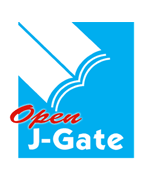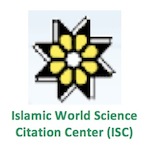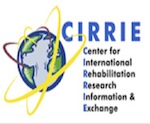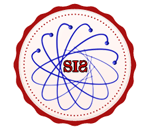EDITORIAL NOTE ON DOSING METHODS IN ELECTROCONVULSIVE THERAPY: SHOULD THE SCANDINAVIAN TIME-TITRATION METHOD BE RESUMED?
Department of Psychiatry, District General Hospital of Forde, Sogndal, Norway
*Corresponding Author:
Per Bergsholm, Department of Psychiatry, District General Hospital of Forde, Sogndal,
Norway,
Email: per.bergsholm@gmail.com
Received: 01-Dec-2022, Manuscript No. AJOPY-22-82013;
Editor assigned: 05-Dec-2022, Pre QC No. AJOPY-22-82013 (PQ);
Reviewed: 19-Dec-2022, QC No. AJOPY-22-82013;
Revised: 26-Dec-2022, Manuscript No. AJOPY-22-82013 (R);
Published:
04-Jan-2023, DOI: 10.54615/2231-7805.S2.004
Editorial Note
One day in 2018 I sat in my home in Førde, north of Bergen in Western Norway, screening PubMed on electroconvulsive therapy. Then an article from the other side of the world appeared, written by Stephen Rosenman in Australia [1]. The title was “Electroconvulsive therapy stimulus titration: Not all it seems.” He argued that “seizure threshold titration is not a proven technique of dose optimization.” He wrote that “It is a prematurely settled answer to an unsettled question that discourages further enquiry. It is an example of how practices, assumed scientific, enter medicine by obscure paths.”
In a commentary, Loo and Martin in Australia, together with McCall and Sackeim in USA, wrote “we disagree with the conclusions he reached”, and presented thorough arguments against Rosenman [2]. However, Kellner and Borys in New York commented that “we completely agree and believe this represents the field having rushed from small research datasets to premature implications in clinical practice” [3].
Rosenman also wrote that Cronholm and Ottosson's threshold from the 1960’s was a “dynamic of duration”, i.e. a stimulus long enough to push the evolving seizure far enough along its path that it reliably continues to completion, whereas Sackeim's threshold from the 1980’s is a “dynamic of intensity”, i.e. a stimulus that would “trigger” the seizure by repeated stimuli with increasing frequency from 20 pulses per second to 140 pulses per second. Actually, it was Hertz, i.e. 40 pulses per second-280 pulses per second [1].
Now, my memory went back 40 years, to Bergen, where I lived and worked in the 1970’s and 80’s. In 1979 I began working in the Psychiatric Clinic at Haukeland University Hospital. There, I met professor Giacomo d’Elia (1934), who had come from Sweden the year before, and to Sweden from Italy several years before. His supervisor in Sweden had been Jan-Otto Ottosson (1925), who I also soon met. Giacomo became my supervisor. He taught me what I have named “The Scandinavian time-titration method” in ECT. Borje Cronholm (1913-1983) and Jan-Otto Ottosson (1925) in Sweden, Giacomo d’Elia (1934) in Sweden and Norway, and Lizzie Sand Stromgren (1928-2007) in Denmark, are the names behind this method. In 1983, d’Elia, Ottosson and Sand Strömgren described this method in the Archives of General Psychiatry [4]. It included:
1. Right unilateral parietotemporal electrode placement with a long distance, at least 12 cm, between the centres of the electrodes.
2. Not a prefixed stimulus duration.
3. Current is interrupted as soon as the clonic contractions shift to the tonic phase, which is most readily observed in the plantar extension of the great toes.
This technique was possible thanks to the Siemens Konvulsator, which had a flexible stimulus duration with a long maximum of 10 seconds, and a low pulse frequency of 50 pulses per second, continuously or in volleys of 4, giving 25 pulses in a second. It also had a current push button on one of its electrode handles [5].
However, the Konvulsator went out of production in the 1990’s, and was replaced with MECTA and Thymatron from the USA [6-8]. With the first versions of these devices the stimulus dose had to be preselected due to short maximum stimulus duration of 2 seconds to 4 seconds [9]. With the latest versions time-titration is possible. The Thymatron even has a program for intermittent pulse-volleys, mimicking the Konvulsator. But time-titration has not been studied with these devices.
A third commentary to Rosenman was by Pascal Sienaert in Leuven, Belgium [10]. He wrote that “An alternative adequate and evidence based dosing-strategy would be welcomed by the field.” Especially, he called for replication studies in psychological sciences by writing that "the only reasonable answer to the very valid questions raised by Rosenman is research and replication."
Actually, the Scandinavian time-titration dosing may be an adequate, evidence based alternative. It has been replicated a lot of times, first by Cronholm and Ottosson with bitemporal ECT, then by demonstrating right unilateral ECT to be highly efficacious and equal to bitemporal ECT, with less cognitive side effects. There are three randomized controlled studies, and two naturalistic studies [11-16].
In 1912-1915 I worked in the Acute Psychiatric Department of Oslo University Hospital, at Ulleval. One day my college Tor Magne Bjolseth from the Psychogeriatric Department of Diakonhjemmet Hospital in Oslo, visited me in my office. He came to discuss some findings from his study on bi-frontal versus right unilateral ECT.
He had found that longer Postictal Reorientation Time (PRT) (measured from the resumption of spontaneous respiration and eye opening), at the first and third treatments predicted a more rapid decline and a lower end-point in continuous HRSD-17 scores. None of the patients who recovered from disorientation in less than 5 minutes met the remission criterion, whereas all with PRTs of 35 minutes or more achieved remission after 12 treatments or less [17].
This fits with d’Elia, Ottosson and Stromgren’s inclusion of a postictal comatose stage in their description of maximum seizure activity; whereas early awakening is one of the signs of insufficient seizure activity, as are pure clonic convulsions.
It also fits with studies by Sackeim, et al. using brief 1.5 ms pulses, published in 1993 and 2000 [18,19]. The patient groups with best outcome had PRTs of 30 minutes to 45 minutes, the groups with poorest outcome 10 minutes to 20 minutes. Moreover, in a study by McCall, et al. including Sackeim, also published in 2000, PRT was about 30 minutes in the best outcome group, versus 15 to 20 minutes in the poorest outcome groups [20].
In a fourth study, published in 2008, PRT was 20-30 minutes in two of the three groups with good outcome versus 15 minutes in the group with poor outcome [21]. The exception from the rule was the group with right unilateral ECT, ultra short pulses of 0.3 ms, and good outcome in spite of a short mean PRT of only 10 minutes. However, this group of patients was unusual, because the mean threshold was exceptionally low, resulting in a mean dose of only 103 mC. In similar studies, mean dose has been 2 to 5 times higher.
There are five dosing methods in ECT:
1. The Scandinavian time-titration dosing [4, 22].
2. Fixed high dosing, i.e. 50%-100% of the
device's maximal output (tradition of
unknown origin). Occasionally a lower
dose has been used.
3. Formula or age-based dosing, i.e., Full-
Age dosing of 5 times age mC for RUL
ECT, close to this for BF ECT, and Half-
Age dosing of 2.5 times age mC for BT
ECT [23-25].
4. Seizure threshold-based dosing, i.e. for RUL ECT 2.5 times to 8 times threshold, for BT ECT 1.5 times to 2.5 times threshold [18-21,26,27].
5. Benchmark dosing, i.e. the dose is adjusted at each session to an initial optimal benchmark, based on satisfactory peak heart rate and tonic convulsions [28].
National guidelines from Denmark, Sweden and Norway equate the age and threshold-based methods [29-31].
National guidelines from USA, Canada, UK, Ireland, Australia and New Zealand favour seizure threshold-based dosing [32-35]. The CANMAT even mentions the threshold-based dosing only [33]. However, these guidelines stand in contrast to critique of the seizure threshold-based dosing from four outstanding ECT specialists in the USA: Max Fink (1923), Richard Abrams (1937), Conrad M Swartz (1946) and Charles Kellner (1952). The essentials of this critique are [36-39]:
1. A fixed multiply does not have similar
effects with different patients,
2. The threshold changes along the treatment
course in half of the patients,
3. The threshold varies with the stimulus
parameters in the same patient, and
4. In the clinic, threshold titration is
cumbersome, increases side effects,
reduces efficiency, and is neither necessary
nor useful.
A fourth comment to Rosenman came from Declan McLoughlin in Dublin [40]. He wrote that “The best way to administer ECT with regard to optimizing therapeutic benefit and simultaneously minimizing cognitive side-effects is not known.” Two years later this was supported by Marilyne Landry, et al. in Montréal [41]. They published a systematic review of the clinical relevance of the seizure threshold-based method compared to the age and fixed dose methods.
They concluded that “no clear recommendations could be drawn regarding the clinical superiority of one method”. However, there was a certain trend in favour of dose titration as three out of seven articles with clinical comparisons and eight out of 14 articles depicting hypothetical comparisons tended to favour dose titration, mostly in order to reduce the risk of over and under-dosing.
Our recommendation is that the Scandinavian time-titration method should be resumed and tested against other methods, because it may have advantages as an individualized method. It may have been prematurely abandoned, due to technical reasons. In time-titration the current is continued beyond the seizure threshold, until generalized tonic contractions have developed. As time-titration is done in every session, it allows for an often rising seizure threshold during the treatment course. The centrepiece of time-titration is a low number of pulses each second and a flexible duration of the pulse train. In the Scandinavian studies pulse train duration was 1.8 s to 10 s, mostly less than 8 s. But the number of pulses delivered was only 45 to 250, due to only 25 pulses in a second, delivered in separate volleys with a frequency of 50 pps inside each volley. I think the risk of over-dosing is low, whereas the risk may be higher of under-dosing by interrupting the stimulus too early. A sufficiently long postictal reorientation time, PRT, may be the ultimate sign of a therapeutic seizure [17]. However, the optimal PRT is not known. It may be somewhat between 5 and 30 minutes, from the resumption of spontaneous respiration and eye opening, and it may depend on age. In conclusion, the clinical indicators of an effective stimulation are generalized tonic contractions and a postictal disorientation phase [4,17]. These may be better indicators than age and seizure threshold. The observation of when tonic contractions are generalized is somewhat arbitrary. However, so is the determination of seizure threshold and even more the number this is to be multiplied with.
References
- Rosenman SJ. Electroconvulsive therapy stimulus titration: Not all it seems. Australian & New Zealand Journal of Psychiatry. 2018; 52(5):410-414.
[Crossref] [Google Scholar] [PubMed]
- Loo CK, Martin D, McCall WV, Sackeim H. Response to Rosenman 'electroconvulsive therapy stimulus titration: Not all it seems'. Australian & New Zealand Journal of Psychiatry. 2018; 52(7):711-712.
[Crossref] [Google Scholar] [PubMed]
- Kellner CH, Borys EJ. The rush from bench to bedside in electroconvulsive therapy. Australian & New Zealand Journal of Psychiatry. 2018; 52(5):498-499.
[Crossref] [Google Scholar] [PubMed]
- D'Elia G, Ottosson JO, Strömgren LS. Present practice of electroconvulsive therapy in Scandinavia. Archives of General Psychiatry. 1983; 40(5):577-581.
[Crossref] [Google Scholar] [PubMed]
- Braunmühl von A. Ein neues Gerät für die Heilkrampfbehandlung mittels elektrischen Stromen. Fortschritte der Neurologie Psychiatrie. 1951; 19(4):325-332.
[Crossref] [Google Scholar]
- Nilsen SM, Willis KW, Pettinati HM. Initial impression of two new brief-pulse electroconvulsive therapy machines. Convulsive Therapy. 1986; 2(1):43-54.
[Google Scholar] [PubMed]
- MECTA Spectrum. MECTA spectrum Instructional Materials. 2022.
- Somatics LLC. Thymatron system IV: A one-page course in Advanced Electroconvulsive Therapy. 2022.
- Sackeim HA. Personal communication. 2020.
- Sienaert P. Time to replicate. Australian & New Zealand Journal of Psychiatry. 2018; 52(7):710-711.
[Crossref]
- d’Elia G. Unilateral electroconvulsive therapy. Acta Psychiatrica Scandinavica. 1970; 215(7):1-98.
[Crossref]
- Strömgren LS. Unilateral versus bilateral electroconvulsive therapy. Investigations into the therapeutic effect in endogenous depression. Acta Psychiatrica Scandinavica. 1973; 240(7):1-65.
[Crossref] [Google Scholar] [PubMed]
- Fromholt P, Christensen AL, Strömgren LS. The effects of unilateral and bilateral electroconvulsive therapy on memory. Acta Psychiatrica Scandinavica. 1973; 49(4):466-478.
[Crossref] [Google Scholar] [PubMed]
- Lamy S, Bergsholm P, d'Elia G. The antidepressant efficacy of high-dose nondominant long-distance parietotemporal and bitemporal electroconvulsive therapy. Convulsive Therapy. 1994; 10(1):43-52.
[Google Scholar] [PubMed]
- Strömgren LS. Electroconvulsive therapy in Aarhus, Denmark, in 1984: Its application in nondepressive disorders. Convulsive Therapy. 1988; 4(4):306-13.
[Google Scholar] [PubMed]
- Strömgren LS. Is bilateral ECT ever indicated? Acta Psychiatrica Scandinavica. 1984; 69(6):484-90.
[Crossref] [Google Scholar] [PubMed]
- Bjølseth TM, Engedal K, Benth, JS, Bersgsholm P, Dybedal GS, Gaarden TL, et al. Speed of recovery from disorientation may predict the treatment outcome of electroconvulsive therapy (ECT) in elderly patients with major depression. Journal of Affective Disorders. 2016; 190(1):178-86.
[Crossref] [Google Scholar] [PubMed]
- Sackeim HA, Prudic J, Devanand DP, Kiersky JE, Fitzsimons L, Moody BJ, et al. Effects of stimulus intensity and electrode placement on the efficacy and cognitive effects of electroconvulsive therapy. The New England Journal of Medicine. 1993; 328(12):839-46.
[Crossref] [Google Scholar] [PubMed]
- Sackeim HA, Prudic J, Devanand DP, Nobler MS, Lisanby SH, Peyser S, et al. A prospective, randomized, double-blind comparison of bilateral and right unilateral electroconvulsive therapy at different stimulus intensities. Archives of General Psychiatry. 2000; 57(5):425-34.
[Crossref] [Google Scholar] [PubMed]
- McCall WV, Reboussin DM, Weiner RD, Sackeim HA. Titrated moderately suprathreshold vs fixed high-dose right unilateral electroconvulsive therapy: acute antidepressant and cognitive effects. Archives of General Psychiatry. 2000; 57(5):438-44.
[Crossref] [Google Scholar] [PubMed]
- Sackeim HA, Prudic J, Nobler MS, Fitzsimons L, Lisanby SH, Payne N, et al. Effects of pulse width and electrode placement on the efficacy and cognitive effects of electroconvulsive therapy. Brain Stimulation. 2008; 1(2):71-83.
[Crossref] [Google Scholar] [PubMed]
- Bergsholm P, Bjølseth TM. Dosing methods in electroconvulsive therapy: should the Scandinavian time-titration method be resumed? Nordic Journal of Psychiatry. 2022; 76(3):170-176.
[Crossref] [Google Scholar] [PubMed]
- Abrams R. Electroconvulsive therapy. 4th ed. Oxford: Oxford University Press; United Kindom: 2002; 1252-1260.
- Bjølseth TM, Engedal K, Benth JS, Dybedal GS, Gaarden TL, Tanum L, et al. Clinical efficacy of formula-based bifrontal versus right unilateral Electroconvulsive Therapy (ECT) in the treatment of major depression among elderly patients: a pragmatic, randomized,assessor-blinded, controlled trial. Journal of Affective Disorders. 2015; 175(4):8-17.
[Crossref] [Google Scholar] [PubMed]
- Petrides G, Fink M. The «half-age» stimulation strategy for ECT dosing. Convulsive Therapy. 1996; 12(3):138-146.
[Google Scholar] [PubMed]
- Sackeim H, Decina P, Prohovnik I, Malitz S. Seizure threshold in electroconvulsive therapy. Effects of sex, age, electrode placement, and number of treatments. Archives of General Psychiatry. 1987; 44(4):355–360.
[Crossref] [Google Scholar] [PubMed]
- Sackeim HA, Decina P, Kanzler M, Kerr B, Malitz S. Effects of electrode placement on the efficacy of titrated, low-dose ECT. The American Journal of Psychiatry. 1987; 144(11):1449-1455.
[Crossref] [Google Scholar] [PubMed]
- Swartz CM. Electroconvulsive and Neuromodulation Therapies. Cambridge: Cambridge University Press, Portland: 2009.
[Crossref]
- Videbech P, Hjerrild S, Jørgensen, Jorgensen MB. ECT-vejledning 2020. Danish Psychiatric Association. 2020; 47.
- Nordanskog P, Nordenskjöld A, Jarbin H, Lindberg C. ECT - kliniska riktlinjer. Swedish Psychiatric Association. 2014.
- Johannesen A, Aakhus E, Luth SM, et al. National professional guideline on the use of Electroconvulsive Treatment - ECT. Oslo: Helsedirektoratet. 2017.
- Weiner RD. The Practice of electroconvulsive therapy. Recommendations for treatment, training, and privileging. 2nd edition. Washington, DC: American Psychiatric Association, United States of America: 2001: 158-159.
[Crossref]
- Milev RV, Giacobbe P, Kennedy SH, Blumberger DM, Daskalakis ZJ, Downar J, et al. Canadian Network for Mood and Anxiety Treatments (CANMAT) 2016 Clinical guidelines for the management of adults with major depressive disorder: Section 4. Neurostimulation treatments. The Canadian Journal of Psychiatry. 2016; 61(9):561-75.
[Crossref] [Google Scholar] [PubMed]
- R Hamish McAllister-Williams. The ECT handbook. 4th Edition. Ferrier IN, Waite J, eds. Cambridge, Cambridge University Press, United Kingdom, 2019;183-201.
[Crossref]
- Weiss A, Hussain S, Bradley NG, Sarma S, Tiller J, Waite S, et al. Royal Australian and New Zealand College of Psychiatrists professional practice guidelines for the administration of electroconvulsive therapy. Australian & New Zealand Journal of Psychiatry. 2019; 53(7):609-623.
[Crossref] [Google Scholar] [PubMed]
- Fink M. What was learned: studies by the Consortium for Research in ECT (CORE) 1997-2011. Acta Psychiatrica Scandinavica. 2014; 129(6):417-426.
[Crossref] [Google Scholar] [PubMed]
- Abrams R. Stimulus titration and ECT dosing. The Journal of ECT. 2002; 18(1):14-15.
[Google Scholar]
- Swartz CM. Stimulus dosing in electroconvulsive therapy and the threshold multiple method. The Journal of ECT. 2001; 17(2):87-90.
[Crossref] [Google Scholar] [PubMed]
- Kellner CH. Towards the modal ECT treatment. The Journal of ECT. 2001; 17(1):1-2.
[Crossref] [Google Scholar] [PubMed]
- McLoughlin DM. I know not 'seems'. Australian & New Zealand Journal of Psychiatry. 2018; 52(7):709-710.
[Crossref]
- Landry M, Lafreniere S, Patry S, Potvin S, Lemasson, M. The clinical relevance of dose titration in electroconvulsive therapy: a systematic review of the literature. Psychiatry Research. 2020; 294(12): 113497.
[Crossref] [Google Scholar] [PubMed]





























